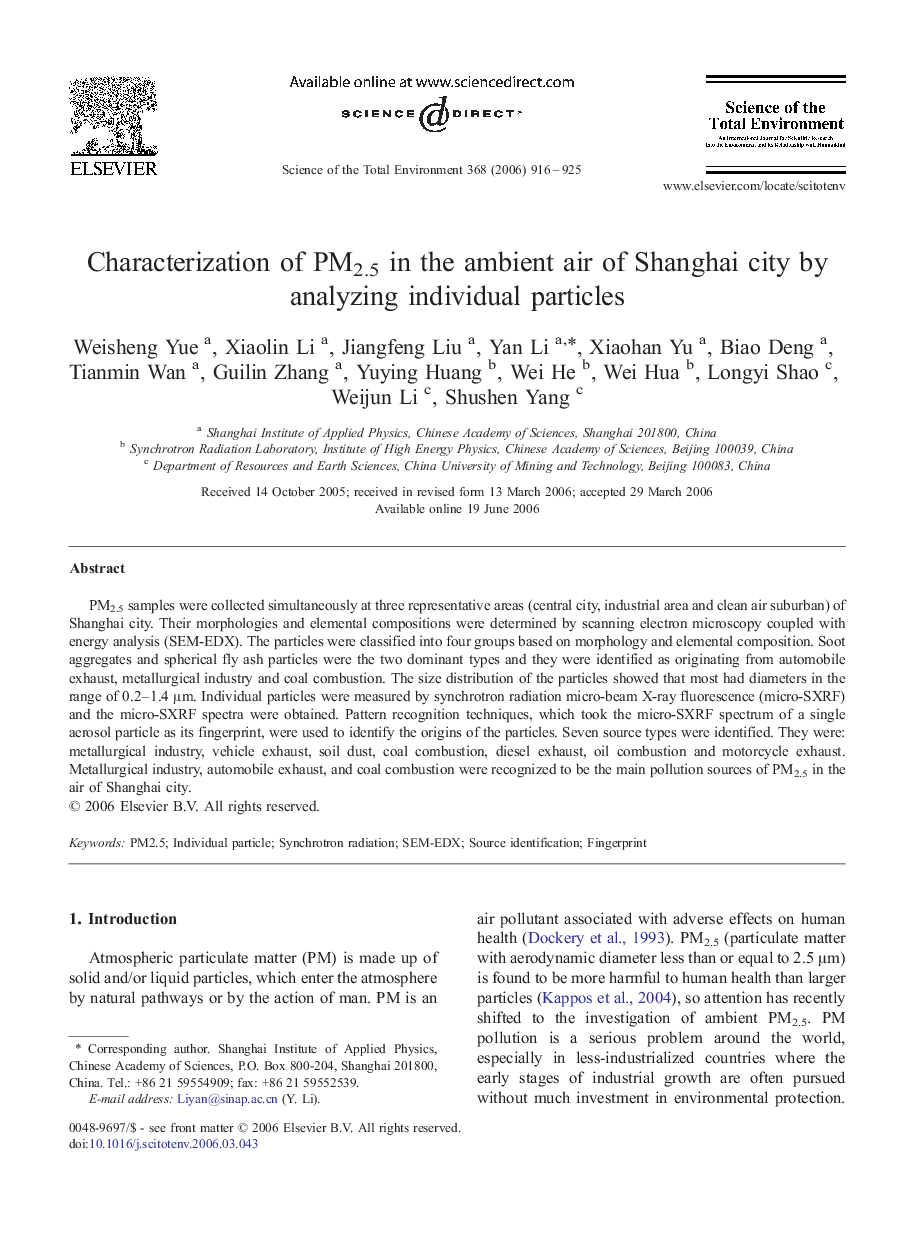| Article ID | Journal | Published Year | Pages | File Type |
|---|---|---|---|---|
| 4433895 | Science of The Total Environment | 2006 | 10 Pages |
PM2.5 samples were collected simultaneously at three representative areas (central city, industrial area and clean air suburban) of Shanghai city. Their morphologies and elemental compositions were determined by scanning electron microscopy coupled with energy analysis (SEM-EDX). The particles were classified into four groups based on morphology and elemental composition. Soot aggregates and spherical fly ash particles were the two dominant types and they were identified as originating from automobile exhaust, metallurgical industry and coal combustion. The size distribution of the particles showed that most had diameters in the range of 0.2–1.4 μm. Individual particles were measured by synchrotron radiation micro-beam X-ray fluorescence (micro-SXRF) and the micro-SXRF spectra were obtained. Pattern recognition techniques, which took the micro-SXRF spectrum of a single aerosol particle as its fingerprint, were used to identify the origins of the particles. Seven source types were identified. They were: metallurgical industry, vehicle exhaust, soil dust, coal combustion, diesel exhaust, oil combustion and motorcycle exhaust. Metallurgical industry, automobile exhaust, and coal combustion were recognized to be the main pollution sources of PM2.5 in the air of Shanghai city.
